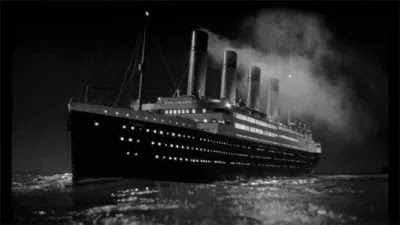 |
| Juano Hernandez and David Brian |
Clarence Brown
(1890 – 1987) was an American film director. Brown was born in Massachusetts but moved to
Tennessee when he was 11. After initially working in the automobile
industry, Brown was hired by the Peerless (film) Studio in Fort Lee, New
Jersey. He became an assistant director working under French director Maurice
Tourneur, father of future director Jacques Tourneur (Out of the Past). After serving in World War I, Brown picked up his
directing career and secured a contract with Metro-Goldwyn-Mayer in 1924. He
remained at M-G-M until the mid-1950s. At M-G-M, Brown directed Joan Crawford
six times and Greta Garbo seven. Brown is famous for directing Garbo in her
first talking picture, Anna Christie
(1930). Brown was nominated six times for Best Director but never won an Oscar.
His films were nominated for a total of 38 Academy Awards. Some of Brown’s
films include Anna Karenina (1935), Wife vs. Secretary (1936), The Rains Came (1939), The White Cliffs of Dover (1944), National Velvet (1944), and The Yearling (1946).
David Brian (1914
– 1993) was an American stage, film, and television actor. His most famous role
was as the lawyer in Intruder in the Dust
for which he was nominated for a Golden Globe Award. Brian also had lead roles
in Flamingo Road (1949), The Damned Don’t Cry (1950), This Woman is Dangerous (1952), Million Dollar Mermaid (1952), Pocketful of Miracles (1961), and How the West Was Won (1962).
Claude Jarman Jr.
(1934 - ) is an American former child actor. He was the director of the San
Francisco International Film Festival, and the former director of Cultural
Affairs for the City of San Francisco. Jarman was discovered in a nationwide
talent search by M-G-M. Jarman was cast as the lead in The Yearling (1946). For his performance, he received a special
Academy Award for outstanding child actor of 1946. Jarman made a total of 11
films. When he reached his twenties, Jarman was dissatisfied with the roles he
was getting so he moved back to Tennessee to finish college at Vanderbilt
University. His last film role was in Disney’s The Great Locomotive Chase (1956).
Juano Hernandez
(1896 – 1970) was a Puerto Rican stage, film, and television actor. He worked
in the silent film The Life of General
Villa (1914). He made his talking picture debut in Oscar Micheaux’s The Girl from Chicago (1932), a film
directed at black audiences. Hernandez’s most famous role was in Intruder in the Dust. For that role, he
was nominated for the Golden Globe Award, “New Star of the Year.” Other films
Hernandez appeared in include Young Man
with a Horn (1950), Stars in My Crown
(1950), and The Breaking Point
(1950). Later films include The
Pawnbroker (1964), The Reivers
(1969), and They Call Me Mister Tibbs
(1970), his last film role.
Elizabeth Patterson
(1874 – 1966) was an American film and stage actress. She is probably best
remembered today as Mrs. Trumbull on the classic television comedy I Love Lucy. Patterson started out in
silent films in 1926. She transitioned to sound pictures and worked
steadily in film for more than four decades. Some of Patterson’s films include Dinner at Eight (1933), So Red the Rose (1935), The Story of Alexander Graham Bell
(1939), Remember the Night (1940), Hail the Conquering Hero (1944), and Little Women (1949).
 |
| Elizabeth Patterson, David Brian, and Will Geer |
Intruder in the Dust trivia
- The film was released several weeks after Pinky, considered the first mainstream American film to deal with racial prejudice.
- Although the film was a critical success, it failed to make back its investment.
- Filming took place on location in Oxford, Mississippi, where William Faulkner lived.
- Director Brown directed Claude Jarman Jr. to his juvenile Academy Award in The Yearling.
- Two of the school pennants on Chick’s bedroom wall were from the fictional town of Jefferson, MS, the setting for the film, and Carvel, the name of the high school in the Andy Hardy movies.
- William Faulkner was paid $50,000 for the film rights to his novel.
To watch the film on YouTube, click on the link below.
To join the discussion on April 3, 2023, at 6:30 p.m., click here. Once you RSVP, you will receive an invitation along with a link to the discussion on Zoom.
Discussion questions
- Were you surprised to discover that this film was made by M-G-M in 1949?
- Do you think this was an accurate portrayal of segregation in the 1940s South?
- What did you think of the performances? Did any one performance stand out to you?
- Did you relate to any of the characters? Which one?
- Did you find the ending satisfying/realistic?
- Were you surprised by anything?






